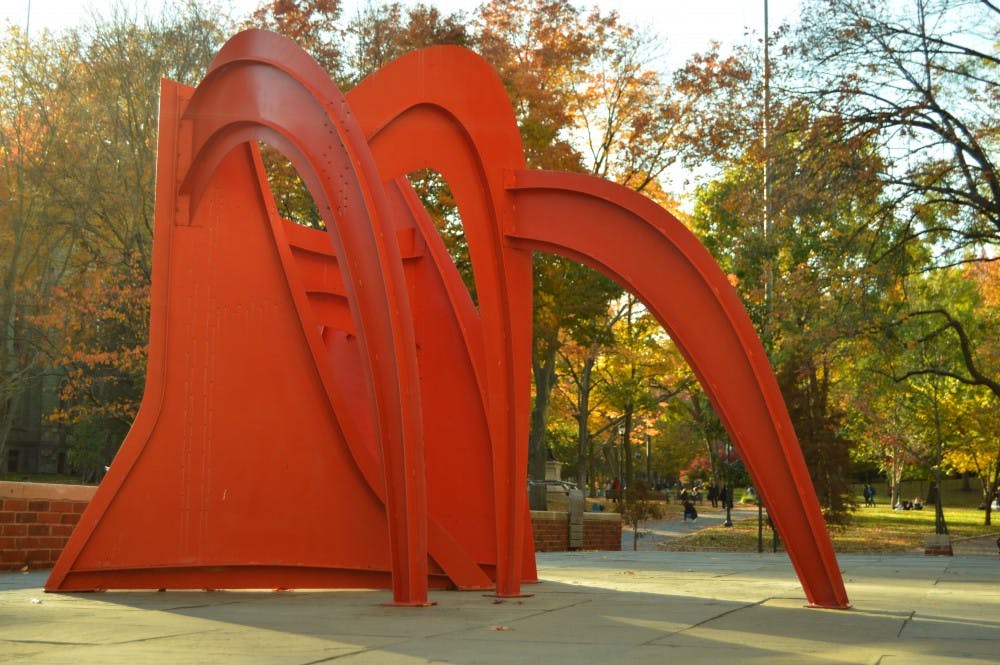Sat squarely outside the Meyerson Building is a monumental, seemingly indiscernible structure of red. From one side, it looks to be some sort of spider, its legs crawling out of its body. On the other, a flat face. While it’s so easy to simply pass by it without giving it a second look, the structure is actually the work of Alexander Calder, an American sculptor whose pieces have graced the likes of the Museum of Modern Art in New York and the Guggenheim.
Called Jerusalem Stabile, the red structure is not actually the original Stabile. In fact, the original one dates back to Calder’s visit to Israel in 1975. At the time, the region was in a state of disarray after an Arab–sponsored resolution at the United Nations condemned the Jewish state. This provoked mass demonstrations of Israeli support from many intellectuals and artists, among them Calder. Stabile was created among the host of outdoor pieces intended to increase beauty and raise cultural awareness in Jerusalem. Installed in Jerusalem's Mt. Herzl two years after Calder’s first visit, the year after he died, it was his last signed piece.
The process of building this final monument gave birth to the production of six maquettes, the preliminary models. But the one at Penn isn’t even one of these. It’s the same form, but was actually created after the final one was constructed. In this way, there are small details distinguishing the original Stabile and the one at Penn, such as its bolt pattern. Because of this, it’s one of the two hybrids existing independently of the original project in Jerusalem. By itself, it is its own unique piece.

Calder is undoubtedly one of the most celebrated pioneers of modern sculpture. His cut–out and abstract objects that move in the air or rest firmly on the ground can be found throughout the world, whether in museums or in gardens and public plazas, ranking him among the first and most prolific sculptors of large–scale outdoor works. But what he’s most famous for are the mobiles: light structures suspended from the ceiling and set in motion through a breath of air. Think the baby mobiles hanging over a crib, but magnified by a factor of 100. The concept would later go on to inspire Marcel Duchamp, who applied “mobiles” to formalize movement in sculpture.
But aside from Duchamp, Calder further developed his own work, leading him to invent a parallel category of stabiles. The term was coined by Calder’s friend and fellow artist Jean Arp, meant to signify how large sheets of metal are assembled to create seemingly dynamic structures, sometimes in very large dimensions. Hence the word Stabile in the title.

Though he didn’t go to Penn, Calder’s piece graces Penn campus as his others have in Jerusalem and other cities across the world. With the brick red Jerusalem Stabile, he’s continuing his family legacy, with the enormous bronze statue of William Penn atop City Hall by his grandfather and the Swann Memorial Fountain at Logan Square by his father.
Next time when you pass by Jerusalem Stabile, try to give a closer look. As Calder famously said, “You have to walk around a stabile or through it—a mobile dances in front of you.”







